Hungarian immigrant Bela Gross arrived in Portland by boat in November 1923. He was 23 years old with money in his pocket and a career back home, but he dreamed of a better life in America.
Mindful of the violence directed at Jews in Europe, he boarded the U.S.S. George Washington in France with 217 other immigrants, and made his way across the Atlantic to join an uncle in Detroit. At the time, Portland’s House Island served as an immigration station, providing overflow for Ellis Island in New York. When Gross arrived in Portland, a Custom House agent denied him entry.
After spending seven years trying to get out of Europe, Gross decided he would rather die than return. He leapt into the icy waters of Casco Bay, only to be rescued by a Portland policeman named Thomas Conley, a son of Irish immigrants on Munjoy Hill. Gross was taken to police headquarters, where he was interviewed by Simon Rubinoff, the only Jewish policeman on the force, who happened to speak Russian.
His story is emblematic of Portland’s long history of immigration and serves a backdrop for a multimedia community art installation by Jo Israelson at the Maine Jewish Museum on Congress Street. The museum, a former synagogue that Israelson’s great-grandfather, Phillip Levinsky, helped build in 1920-21, stands at the foot of Munjoy Hill and on the edge of Bayside, neighborhoods that have been home to immigrants and newcomers to Portland for generations.
“Welcoming the Stranger” connects the stories of Jewish immigrants to Portland in the 1920s with immigrants and asylum seekers coming to Portland today. Just as Gross risked his life to come to America a century ago, so too have many of the city’s newest refugees, choosing Portland because of its tradition as a welcoming place or finding themselves here, unfamiliar, after a search for safety. His story and Israelson’s message seems especially poignant as Europe struggles with its current immigrant crisis and the world reacts to the desperation of families fleeing Syria.
“The concept of hospitality and welcoming the stranger pervades every culture,” Israelson said. “It’s a basic premise of humanity. When people come to you in need, you help. When someone knocks at the door, you open it.”
The exhibition hinges on the House Island Quarantine and Immigration station, which was known as the Ellis Island of the North. The island in Portland Harbor is in the news again. Preservationists convinced the City Council to designate it as an historic district earlier this year, and half the island is for sale and targeted for development.
The three-part exhibition, on view through Oct. 26, tells many stories. Working with dozens of weavers and spinners, Israelson helped build “Abraham’s Tent,” a 50-foot muslin and wool weaving suspended from the main hallway ceiling and walls of the Jewish Museum. Visitors pass under the tent as they enter the exhibition. It is named after the migrant Biblical character who lived in tents and welcomed people in need. Abraham’s mandate is a universal theme and can be found in other religious texts, including the Quran and Torah.
Israelson stenciled the word “begat” on the hallway walls, reasoning, “We were all begatted.” We are all of one family, connected. A hallway floor cloth is stenciled with seaweed collected from House Island and compass roses to represent the watery journey from one continent to the another. In the center, Israelson writes the names of the exhibition in Hebrew.
“Sarah’s Generosity” involves seven aprons that Israelson designed to represent the work of the Portland chapter of the National Council of Jewish Women. The women assisted immigrants by operating a kosher kitchen on House Island. Israelson personalizes the aprons with stories of the seven women, including their genealogy and obituaries.
And finally, there’s “Habeas Corpus,” which tells the story of Bela Gross and its legal resolution — he was detained for months but ultimately allowed to stay — comparing his story to the stories of present-day asylum seekers in Portland. The exhibition also includes weaving made by hundreds of artists representing schools, neighborhoods, synagogues, mosques, Quakers and other groups of people. The weavings represent the makers’ personal journeys.
The idea evolved over time, Israelson said. She grew up in Portland, graduating from Portland High School in 1969. She lives most of the year in Maryland and has spent more time in Portland in recent years to care for her elderly mother. When in Maine, she lives on Peaks Island, and is a kayaker. During a paddle in Portland Harbor two years ago, she noticed construction activity on House Island and was concerned about its impact on the island’s historic structures. She inquired at City Hall and began the process of researching the island’s history and helping efforts to ensure its preservation.
During another trip home, she took a cab ride from the airport and began a conversation with an immigrant cab driver. “What were you in your other country?” she asked the driver.
He told Israelson that he had given up a productive life and career in his former country, and he came to the United States to escape persecution and fear — much the same as Bela Gross had nearly a century before. The parallels in their stories felt profound to Israelson, and it was in that moment she realized the bookends of her exhibition: The stories from Portland’s immigrant past with stories of Portland’s immigrant present.
“Immigration has never been easy,” she said, noting the issue’s presence in current American and global political and social conversations. And it’s getting more complicated all the time, with cities like Portland and Lewiston wrestling to balance budgets while still providing a safe landing spot for people seeking better lives.
When she graduated from Portland High, Israelson heard three languages spoken in the hallways: English, Italian and Greek. Today, 41 languages are spoken within the school’s walls.
What appears to be constant over time is the difficult nature of welcoming newcomers to the city, she said. She hopes her exhibition enlightens people and highlights the efforts of Portlanders to make the transition easier for newcomers.
The heroes of the exhibition are the women portrayed in “Sarah’s Generosity.” The women began the kosher kitchen on House Island to help feed the Jewish immigrants arriving from Europe. Their actions embodied the moral spirit of Abraham, Israelson said.
Anna Sapiro was president of the Jewish women’s group when Bella Gross made his leap into the harbor. Israelson has no way of knowing if Gross was able to eat the food that Sapiro and the other women made, but other immigrants certainly did. They established the kitchen to help the newcomers feel welcome, with the grace of a home-cooked meal and familiar food.
These were everyday Portland women, motivated to help out of a sense of compassion and moral obligation, she said. In addition to Sapiro, the group included Jennie Markson, Mildred Markson, Jennie Schiebe, Helen Rosenberg, Molly Press and Lenna Perry. Israelson pieces their stories together through census and tax records, marriage licenses, birth and death certificates, and interviews with relatives. She tells their stories by adorning their aprons with photos, maps and other items from the women’s histories.
She estimates she received help from hundreds of artists and a dozen community, immigrant and arts groups. They helped with weaving and sewing, and created a groundswell of support for the project. Many times, she said, Israelson faced doubts from friends and family that she could see the project through to completion. Without the help of many hands working together it would not have happened, she said.
Among them was Kate Anker, who operates Running With Scissors, an artist studio collective in East Bayside. Anker subsidized studio space for Israelson, because she believes the project is important both to East Bayside and Portland, and to Maine as a whole. It’s a political issue, pitting cities against the state over funding, and has become a theme in the early stages of the national presidential campaign.
“It’s a timely conversation to be having right now, and an interesting one to be looking at from an historical perspective,” Anker said.
Portland printmaker Elizabeth Jabar also helped out, teaching Israelson printmaking skills and helping her with the construction of the aprons. “She is really touching on a lot of things that are going in Portland right now and throughout Maine,” Jabar said. “Even though it’s an historical exhibition, it’s contributing to the dialogue about Portland the changing face of Maine.”
As she paddled her kayak past House Island two summers ago, Israelson had no idea the string she tugged at would lead to this exhibition. She was concerned that historic buildings were being harmed and felt obligated to say something. As she inquired further, she realized the depth of the House Island story and how it resonates today.
“For me, the underlying piece is that we all have dreams,” she said. “We should all support each other’s dreams.”
Copy the Story Link
Send questions/comments to the editors.


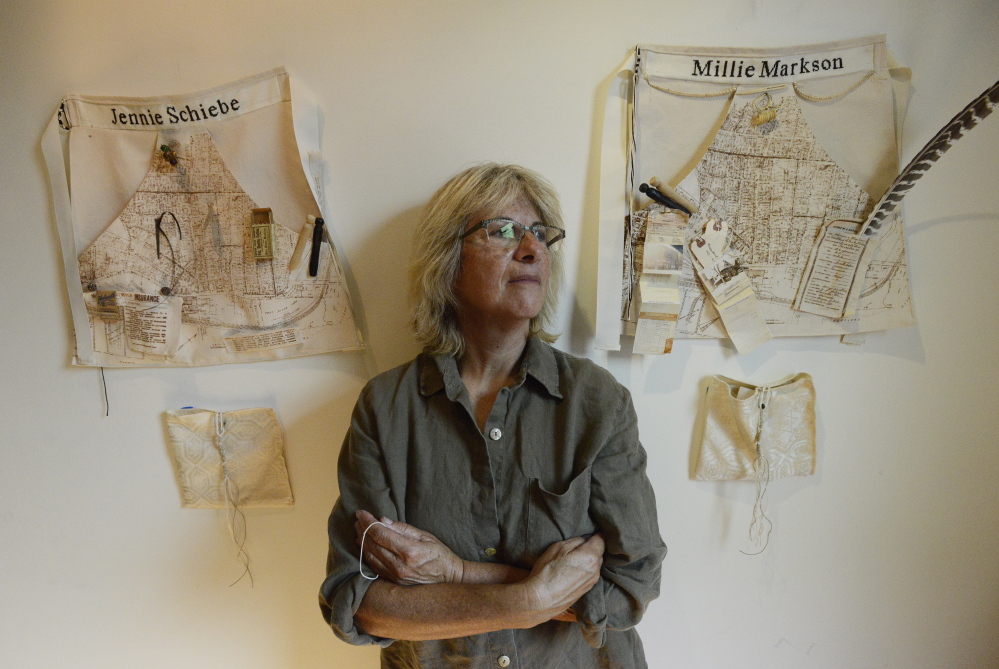
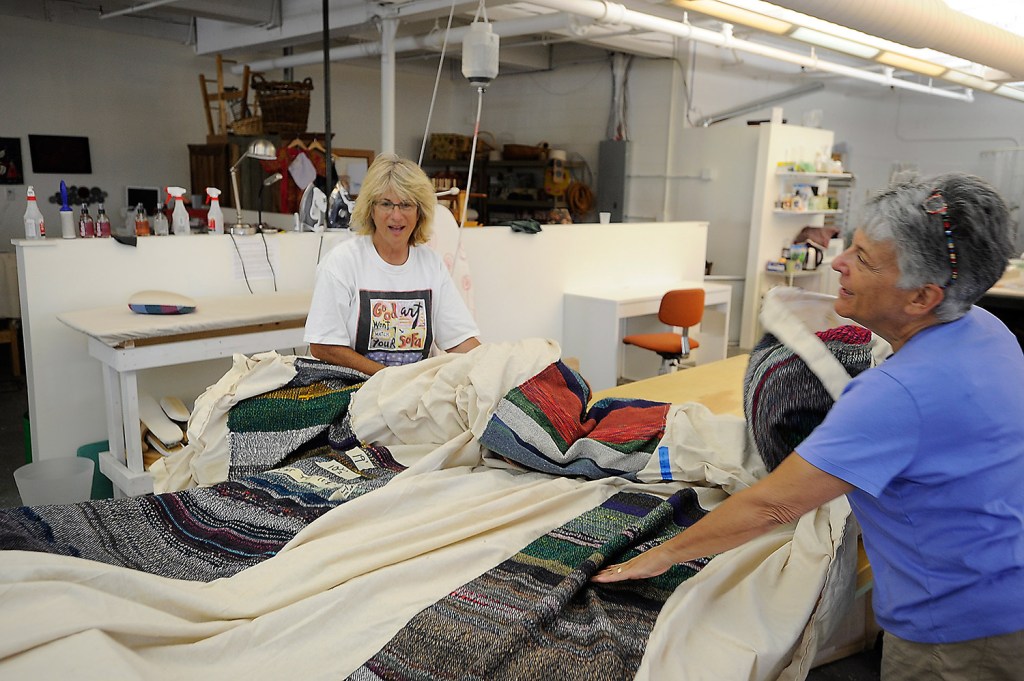
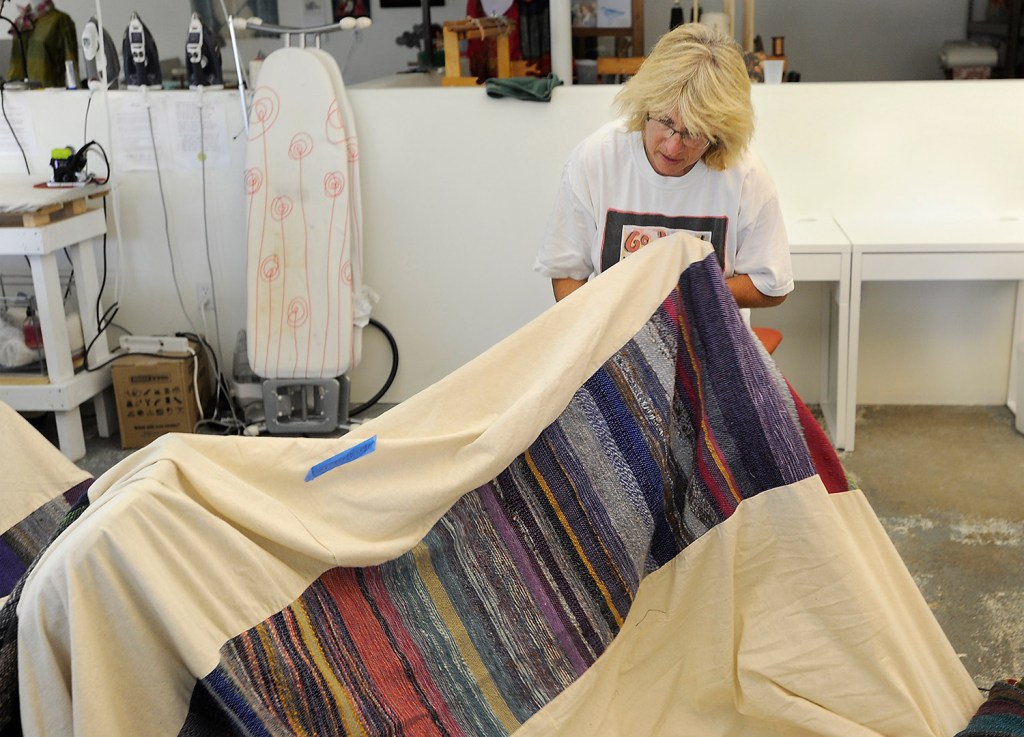
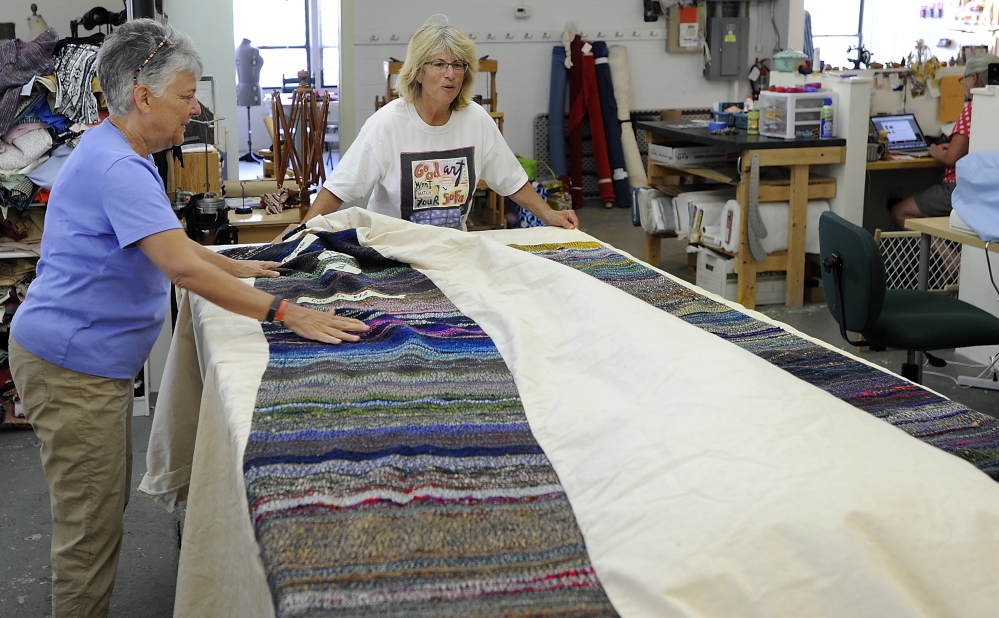
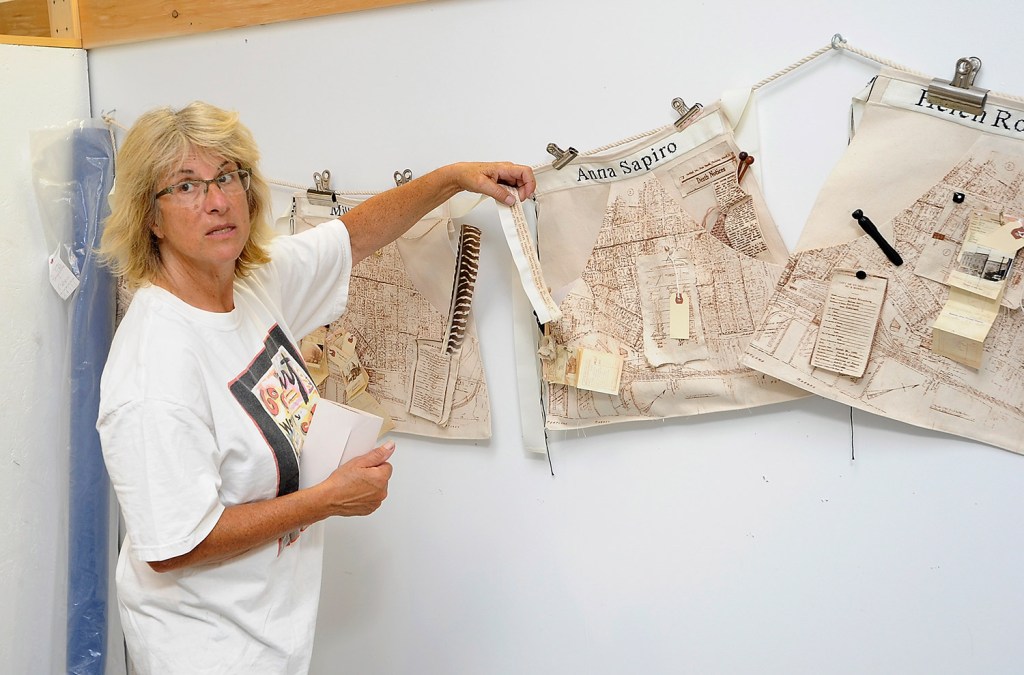
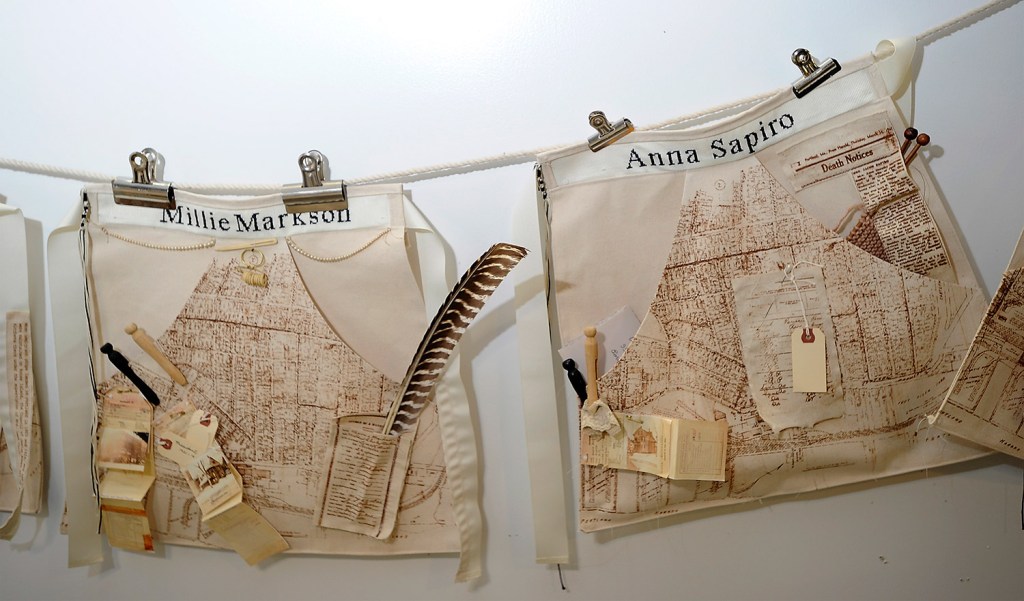
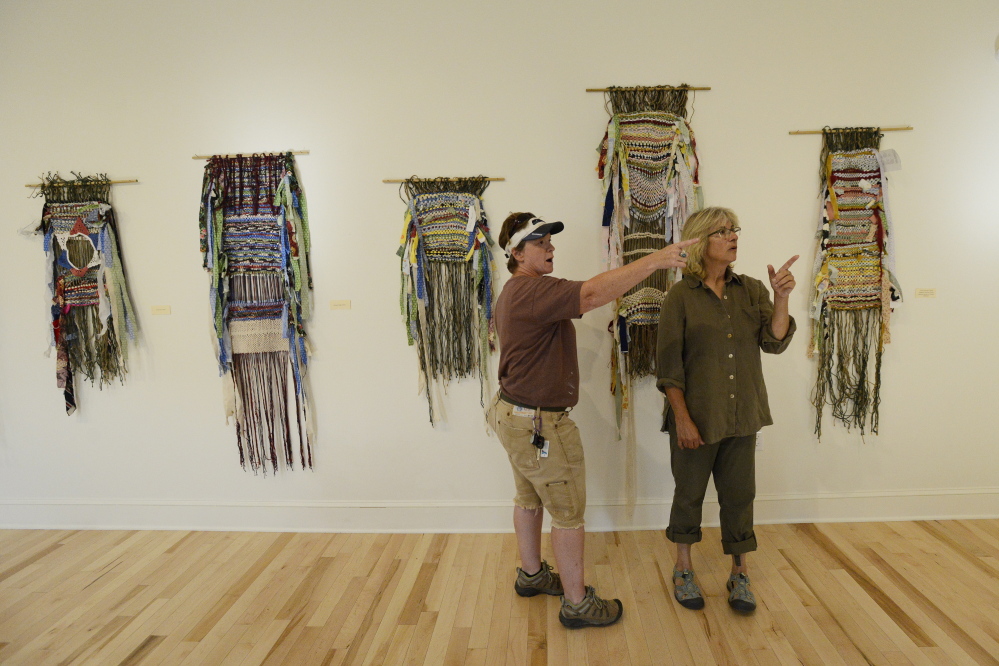
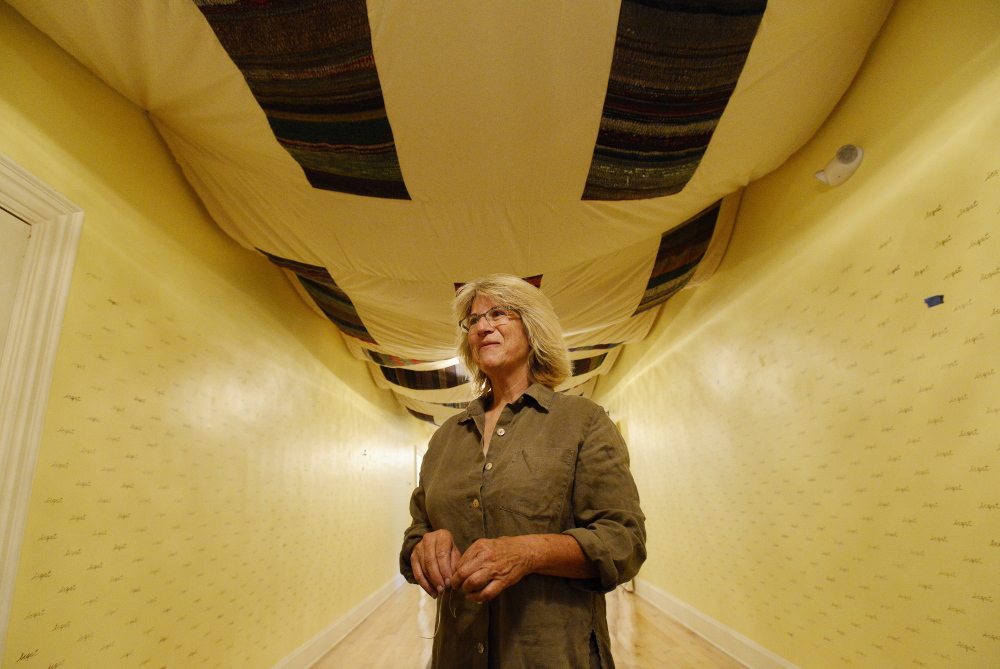

Success. Please wait for the page to reload. If the page does not reload within 5 seconds, please refresh the page.
Enter your email and password to access comments.
Hi, to comment on stories you must . This profile is in addition to your subscription and website login.
Already have a commenting profile? .
Invalid username/password.
Please check your email to confirm and complete your registration.
Only subscribers are eligible to post comments. Please subscribe or login first for digital access. Here’s why.
Use the form below to reset your password. When you've submitted your account email, we will send an email with a reset code.